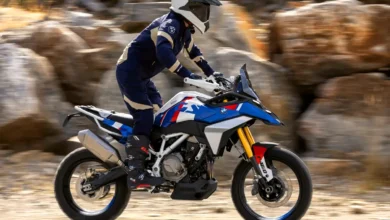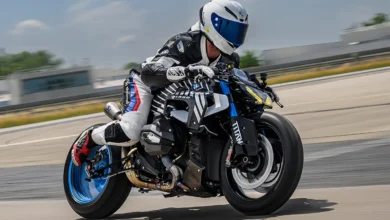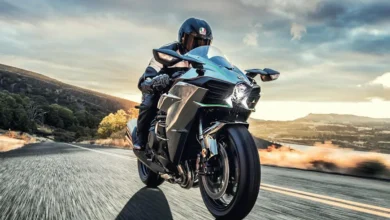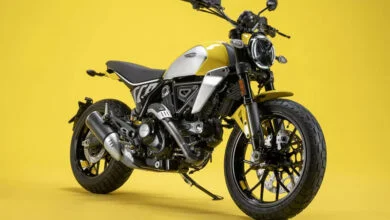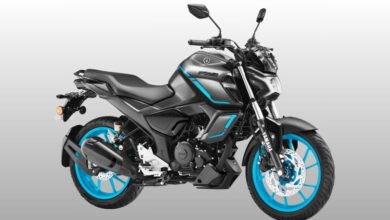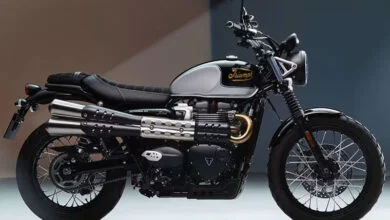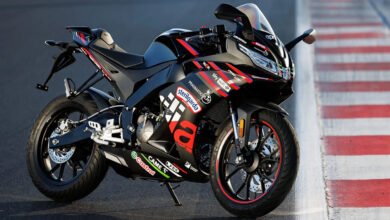2025 Ducati Panigale V2 vs Yamaha YZF-R9 vs Suzuki GSX-R750: The Ultimate Middleweight Supersport Showdown
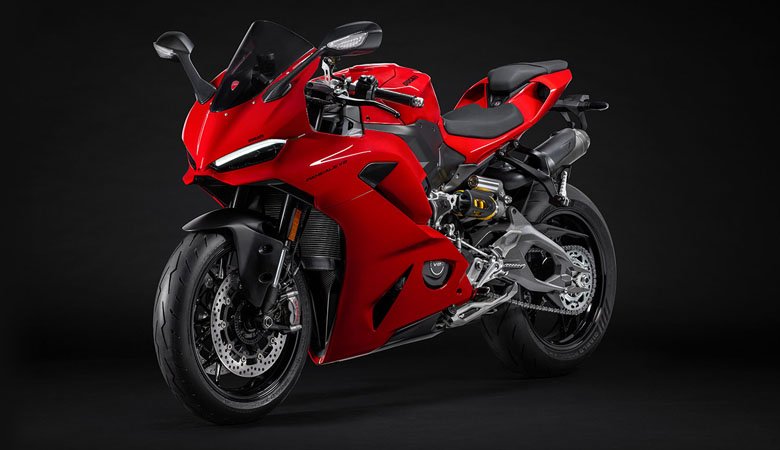
2025 Ducati Panigale V2 vs Yamaha YZF-R9 vs Suzuki GSX-R750: The supersport motorcycle segment has evolved significantly in recent years. As riders seek a balance between racetrack-ready performance and real-world usability, middleweight sportbikes have emerged as the new sweet spot. Three heavyweights—the 2025 Ducati Panigale V2, Yamaha YZF-R9, and the tried-and-true Suzuki GSX-R750—compete against one another in this eagerly awaited comparison to see which bike offers the best overall performance for fans.
The Rise of Next-Gen Supersports
Traditionally, liter-class superbikes dominated headlines with sheer horsepower and track-day dominance. But for many riders, the real thrill lies in accessible power, agility, and real-world comfort—traits often found in the 750–900cc range. The “Next-Gen Supersport” class has emerged as a result of this change.
The Ducati Panigale V2, Yamaha’s all-new YZF-R9, and Suzuki’s enduring GSX-R750 each take a different approach to this evolving category. While Ducati brings Italian finesse, Yamaha blends modern engineering with everyday usability, and Suzuki banks on legacy performance.
Engine & Power Delivery: Numbers Meet Nuance
Ducati Panigale V2: Refined V-Twin Power
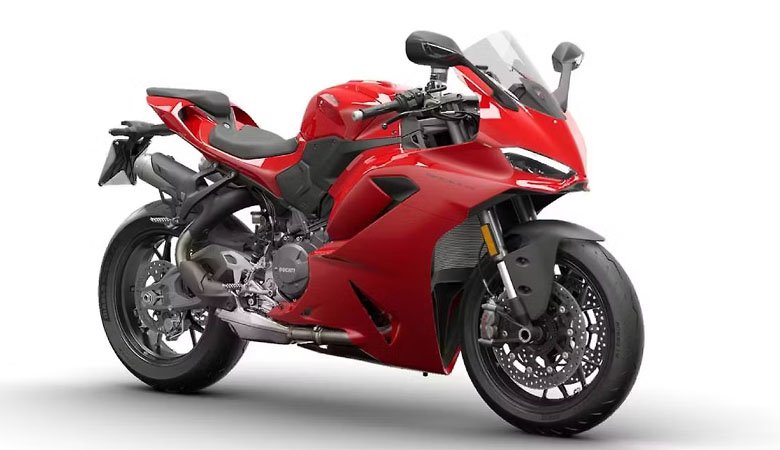
Powered by an 955cc Superquadro L-twin engine, the Panigale V2 produces approximately 155 horsepower and 104 Nm of torque. What makes the Ducati stand out isn’t just peak power—but how it delivers it. The smooth, linear torque curve provides immense control, especially in mid-corner throttle applications. Ducati’s V-twin architecture offers strong engine braking and an incredibly predictable feel, which riders appreciate on both road and track.
Yamaha YZF-R9: Triple-Cylinder Versatility
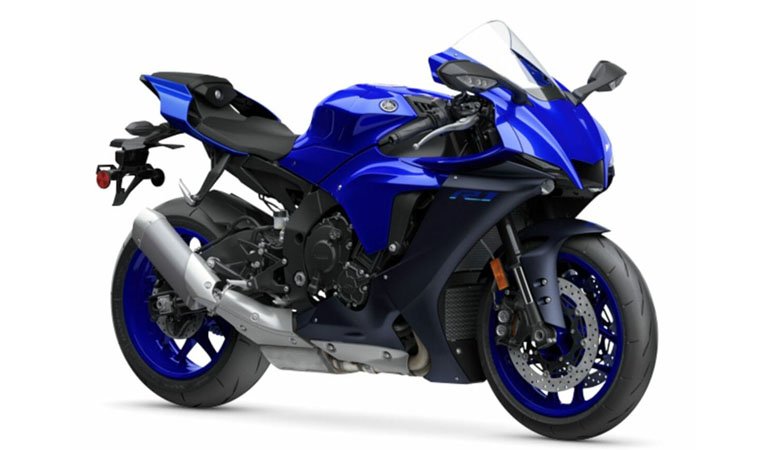
Yamaha’s well-proven 890cc CP3 inline-triple engine from the MT-09, tweaked for a more aggressive character, is used in the YZF-R9. With an output of about 117 horsepower and 93 Nm of torque, the engine puts more emphasis on mid-range power than high-rev showmanship. The triple-cylinder layout offers a unique balance of torque and smoothness, making it extremely usable in daily riding scenarios and spirited canyon carving.
Suzuki GSX-R750: The Analog Thrill Machine
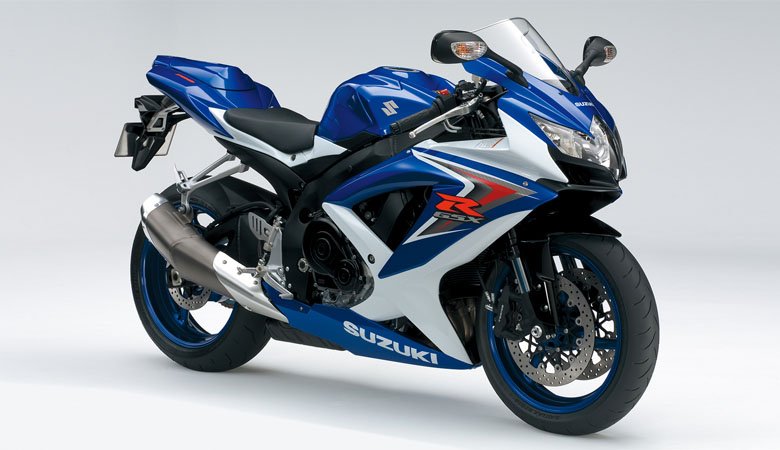
Suzuki’s GSX-R750 remains a fan favorite for purists. Its 750cc inline-four delivers around 148 hp and 86 Nm of torque—still impressive numbers for a platform that’s largely remained unchanged in recent years. Unlike the others, it thrives in high-RPM environments, rewarding riders who keep the needle near redline. The downside? Less grunt in the low- to mid-range, making it slightly more demanding in everyday riding.
Ergonomics and Comfort: Street vs Track Balance
Ducati Panigale V2
While visually aggressive, the V2’s ergonomics are surprisingly comfortable. A well-sculpted seat, slightly raised clip-ons, and thoughtful rider triangle allow for extended road use without sacrificing track capabilities. Narrow tank design and balanced weight distribution further contribute to comfort, even for longer rides.
Yamaha YZF-R9
The R9 attempts to blend track aesthetics with street usability, but results are mixed. Though it includes a broader handlebar compared to traditional supersports, the long reach to the clip-ons and aggressive seat angle can lead to wrist and back fatigue. It’s more suited for shorter stints or focused riding sessions than full-day tours.
Suzuki GSX-R750
This bike makes no ergonomic concessions—it’s race-oriented through and through. Tall rearsets and a low-slung cockpit put the rider in a full tuck almost immediately. While exhilarating on the track, it can become uncomfortable in traffic or long-distance rides, making it less versatile for daily use.
Chassis, Suspension & Handling: Confidence vs Raw Feedback
Ducati Panigale V2
The V2 shines in agility and poise. Its aluminum monocoque frame, high-end Showa suspension, and perfectly dialed-in geometry make it the most composed of the trio. Whether attacking a tight chicane or flowing through fast sweepers, the Ducati feels planted and effortless.
Yamaha YZF-R9
Yamaha’s chassis geometry is geared for nimble handling, but its real-world execution can feel inconsistent. The rear-biased weight distribution impacts front-end feel, especially during hard braking or fast direction changes. With upgraded suspension tuning, however, the R9 becomes a formidable corner-carver.
Suzuki GSX-R750
Despite its age, the GSX-R750’s chassis remains sharp and responsive. It offers direct, analog feedback that few modern machines can match. However, its lack of modern electronic aids and somewhat dated suspension may limit its performance ceiling for less experienced riders.
Electronic Rider Aids: Old School vs Tech Savvy
Ducati Panigale V2
Ducati leads the pack in rider aids with its comprehensive suite: cornering ABS, traction control, wheelie control, engine braking management, and multiple ride modes—all supported by a 6-axis IMU. These systems enhance rider confidence without being intrusive.
Yamaha YZF-R9
Yamaha offers a solid electronics package including lean-sensitive ABS, adjustable traction control, and a slick bi-directional quickshifter. Cruise control adds a touring-friendly touch. The electronics work seamlessly, though the throttle response in some modes can feel slightly abrupt.
Suzuki GSX-R750
Here’s where the GSX-R750 shows its age. Lacking an IMU or advanced electronics, it relies entirely on rider skill. There’s a basic traction control system, but no cornering ABS or ride modes. Newer riders may find the raw sensation scary, but purists will appreciate it.
Track Performance: Stopwatch Truth
During controlled laps on a race track, the Ducati Panigale V2 consistently posted the fastest lap times. Its linear power delivery, precise handling, and confidence-inspiring electronics allowed testers to push harder with fewer mistakes. The Yamaha YZF-R9 was only a fraction slower, showcasing strong mid-range and capable handling, though it lacked the finesse of the Ducati. Despite being exciting, the GSX-R750 lacked contemporary assistance technologies and was analogue.
On-Road Impressions: Daily Usability vs Weekend Warrior
For everyday riding, the Yamaha YZF-R9 offers the most versatility. Its engine is tractable, electronics are modern, and the ride is generally compliant. The Ducati Panigale V2 isn’t far behind—it’s surprisingly civil for a high-performance machine. The Suzuki GSX-R750, however, is purely a weekend toy, better suited to riders who want adrenaline over comfort or convenience.
Pricing and Value
- Ducati Panigale V2: Premium price, premium build. Starting around $18,000, it’s the costliest of the three, but the build quality, electronics, and performance justify the price tag.
- Yamaha YZF-R9: Mid-tier pricing around $11,500, making it the most value-packed option given its modern tech and daily usability.
- Suzuki GSX-R750: Priced at approximately $12,000, it’s competitively positioned, but lacks modern features, which can affect long-term value perception.
Pros & Cons Summary
Ducati Panigale V2
Pros:
- Best-in-class electronics
- Balanced performance on track and street
- Exceptional build quality
Cons:
- Expensive
- Quickshifter can be twitchy
- Cruise control not standard
Yamaha YZF-R9
Pros:
- Excellent mid-range power
- Modern rider aids and cruise control
- Practical for daily use
Cons:
- Ergonomics can be awkward
- Throttle response needs refinement
Suzuki GSX-R750
Pros:
- Pure, analog riding experience
- Sharp chassis
- Proven performance legacy
Cons:
- Outdated tech
- Uncomfortable on the street
- No IMU-based safety systems
Final Verdict: Which One Wins?
If you’re looking for a well-rounded supersport with top-tier performance, cutting-edge electronics, and surprising comfort, the Ducati Panigale V2 takes the crown. It’s the most refined machine in this comparison and delivers premium value despite the higher price.
For riders seeking a sportbike that’s fun, versatile, and loaded with usable features for less money, the Yamaha YZF-R9 is the smart choice. It’s nearly as quick, very tech-savvy, and better suited to mixed-use riding.
Meanwhile, the Suzuki GSX-R750 remains a raw, engaging machine for seasoned riders who want to feel every vibration and throttle twitch. While it’s not as polished as its competitors, its loyal fanbase proves it still holds its ground in this new age of supersports.
Also Read: BMW S 1000 RR vs Kawasaki ZX-10R: The Ultimate Battle of Speed, Power, and Precision in 2025
Conclusion: Modern Supersports for Every Rider
The next generation of supersport motorcycles is not about having the most power—it’s about balance, usability, and fun. Whether you prefer Ducati’s refinement, Yamaha’s practicality, or Suzuki’s purist charm, there’s never been a better time to explore this middleweight category.

